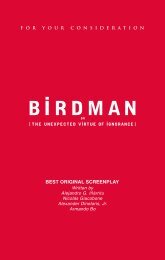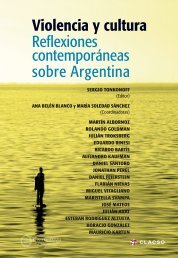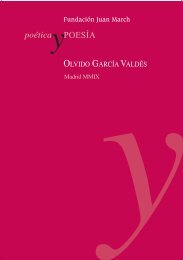blueprints
blueprints
blueprints
Create successful ePaper yourself
Turn your PDF publications into a flip-book with our unique Google optimized e-Paper software.
A Place for Poetry | 189<br />
tive poetry signage matched with nature and conservation resources and<br />
related poetry events at libraries, and a poet in residence at each site. 6 The<br />
installations were inaugurated in 2010, and we anticipate that millions of<br />
people will experience poetry in the zoos of New Orleans, Milwaukee,<br />
Little Rock, Jacksonville, and Brookfield, Illinois, just outside of Chicago.<br />
This themed urban synergy among institutions uses poetry as the catalyst—and<br />
the language of poets to articulate the most essential message of<br />
wildlife biologists to the public.<br />
Art can create new kinds of affiliation and understanding in our communities.<br />
The Language of Conservation installations will function as flexible<br />
anthologies throughout the zoos and reinforce a basic assumption that<br />
poetry can help people apprehend any subject with greater pleasure and<br />
understanding. The arts, whatever else they may be, are about how we live<br />
in the world. In my view, this kind of generative, associative work will<br />
become more necessary as we seek to create new modes of engagement,<br />
understanding, and value in our cities and in our towns. 7<br />
This new model comes out of a successful project at the Central Park<br />
Zoo in the late 1990s, when poems were placed throughout the zoo on<br />
benches, rafters, and stairs, 8 creating another set of connections through<br />
which visitors could enter into relationship with the living creatures they<br />
were apprehending. Finally, it is because poetry is an intellectual and emotional<br />
complex in an instant of time that the art form has been so associatively<br />
rich.<br />
At the Central Park Zoo, professional evaluators did interviews with<br />
zoo visitors before and after the poetry signage was installed. When visitors<br />
were asked what they took away about conservation after the poetry installation,<br />
most frequently they would recite a few lines from a poem or<br />
approximate a poem fragment. When asked directly if they liked the poetry,<br />
some of those same people did not know that what they were saying was<br />
poetry. Nonetheless, researchers found that after the poetry was installed,<br />
visitors had a significantly increased awareness of human impacts on ecosystems<br />
and, more important, a deepened sense of themselves as participants in<br />
a larger world.<br />
Scientists and zoo workers who had been suspicious of poetry at the<br />
beginning of the project began to think of it as a “conservation tool.”<br />
Because it works. (Personally, I don’t care if scientists call a Gary Snyder<br />
poem a tool—if they love it and go back to it and make it their own.) By







